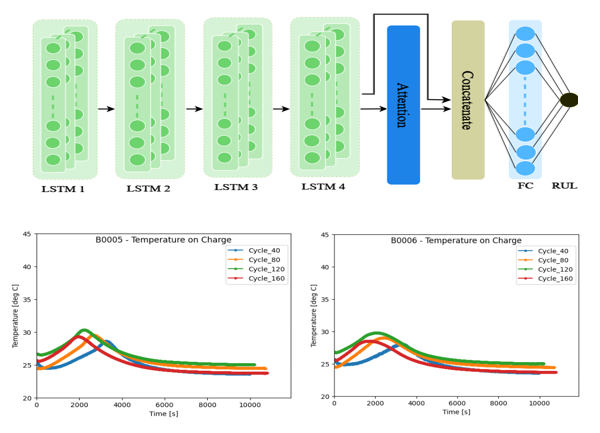An Attention-Based Deep Learning Approach for Lithium-ion Battery Lifespan Prediction: Analysis and Experimental Validation
Main Article Content
Abstract
The potential for lithium-ion batteries to become unstable can lead to operational malfunctions within the system and result in safety incidents. Therefore, accurately forecasting the remaining useful life (RUL) is beneficial in mitigating the likelihood of battery failure and prolonging its operational lifespan. Hence, precise estimation of RUL can help prevent numerous safety incidents and minimize resource wastage, presenting a significant and complex issue. This paper introduces a Deep Learning (DL) model that utilizes Long Short-Term Memory (LSTM) and attention mechanism to improve the accuracy of predicting the RUL of lithium-ion batteries. Initially, the battery capacity regeneration phenomenon is captured by applying four LSTM layers, followed by implementing an attention mechanism to align input and output sequences based on the content or semantics of the input sequence. Finally, the final prediction outcomes are generated via a Fully Connected (FC) layer. The efficacy of the proposed model is assessed through the utilization of the NASA dataset, and its performance is contrasted with various deep learning models to highlight its efficacy. Results from the experiments demonstrate that the suggested At-LSTM presents a robust option for forecasting the RUL of lithium-ion batteries, as it delivers superior results compared to all other models examined.
Downloads
Article Details

This work is licensed under a Creative Commons Attribution 4.0 International License.





